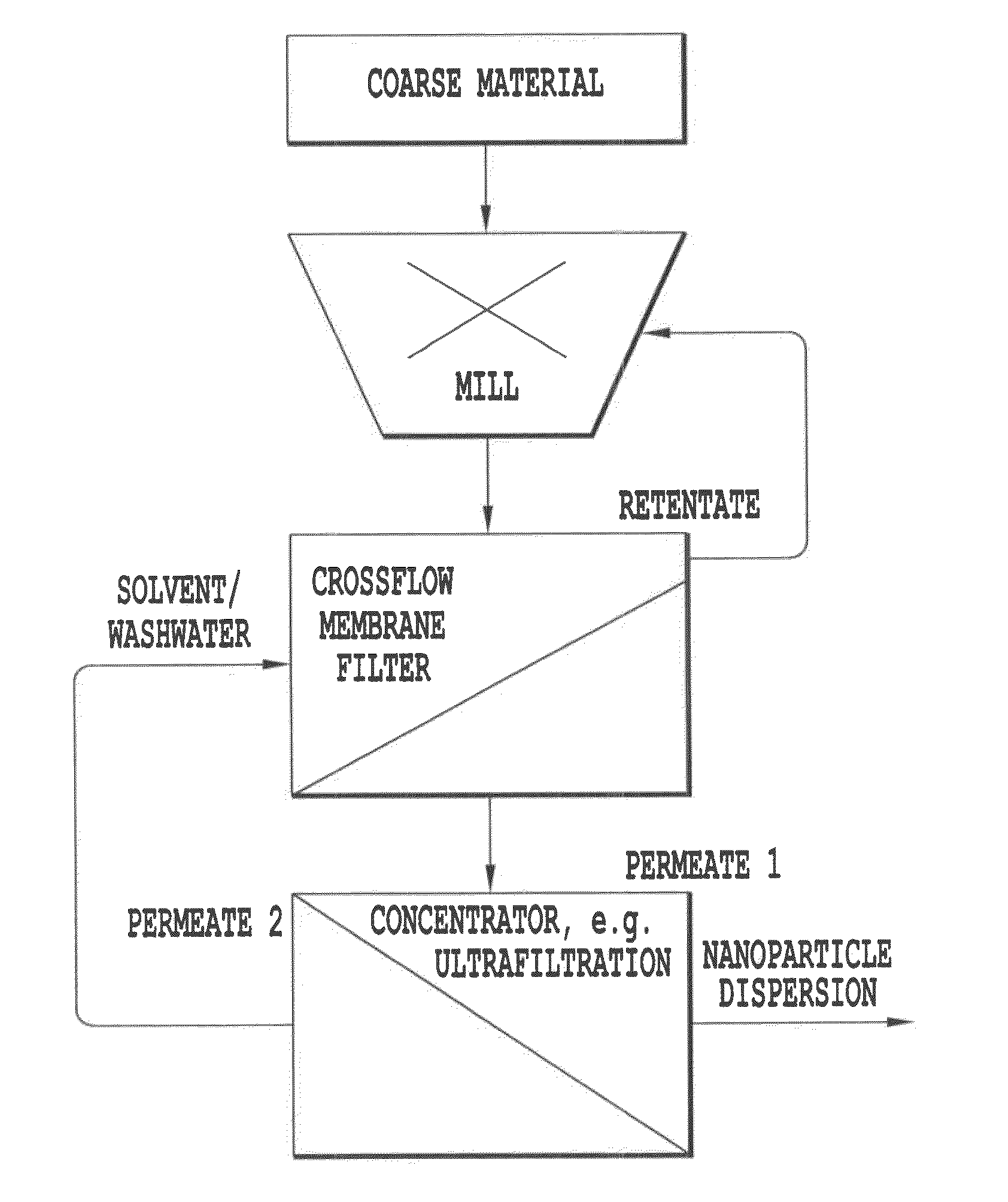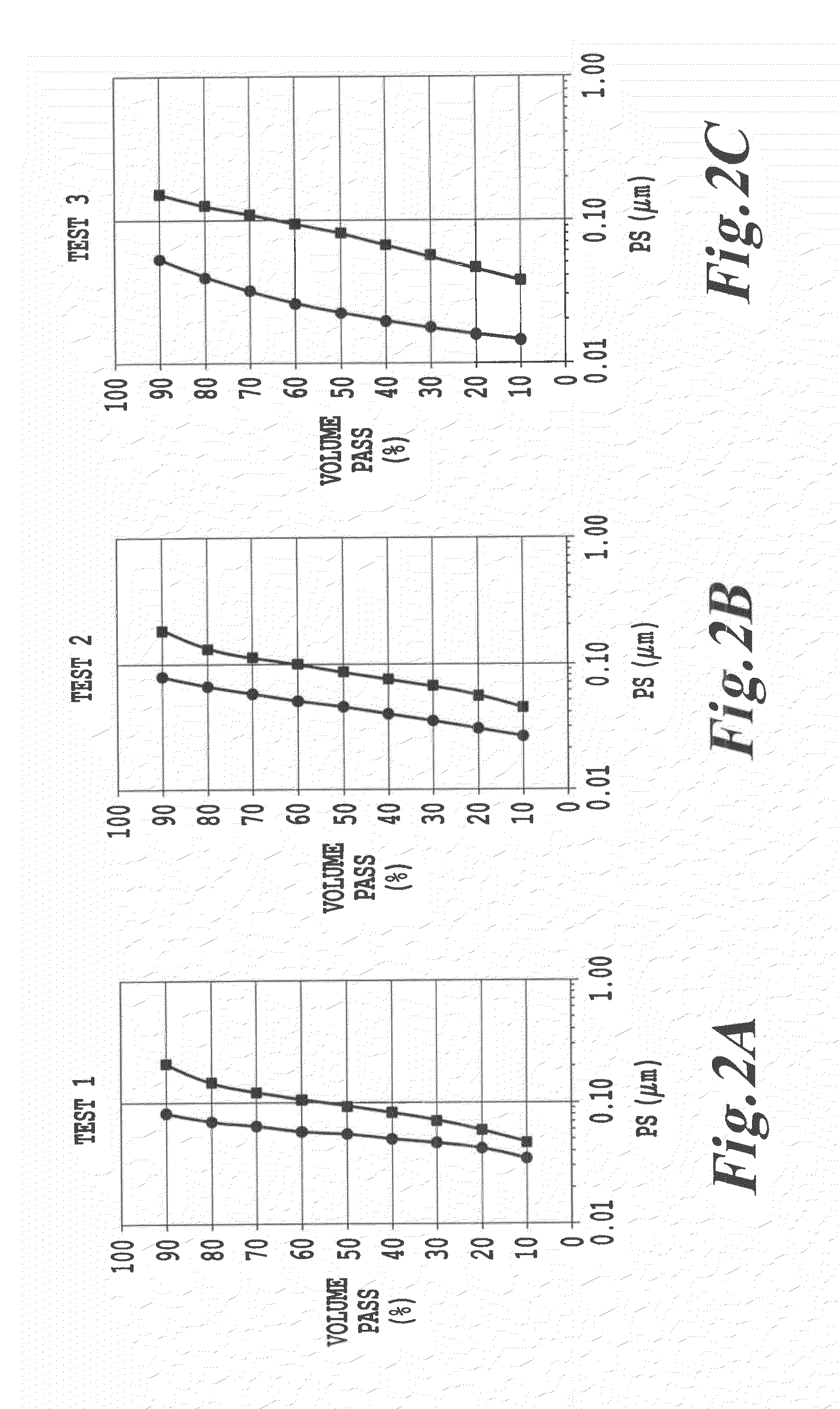Method of fractionating oxidic nanoparticles by crossflow membrane filtration
a technology of oxidic nanoparticles and membrane filtration, which is applied in the field of fractionation dispersions of oxidic nanoparticles by membrane filtration, can solve the problems of only limited use of methods in the case of nanoparticles, adversely affecting the properties of composites, and unsuitable for relatively large quantities. , to achieve the effect of preventing the build-up of a cake layer on the membran
- Summary
- Abstract
- Description
- Claims
- Application Information
AI Technical Summary
Benefits of technology
Problems solved by technology
Method used
Image
Examples
examples
[0038]The tests below were performed on a 30% dispersion of titanium dioxide in water, as may be prepared, for example, by a process which is described in DE 10204470 A1. The dispersion used has a D50 value of approximately 0.09 μm and also a D90 value of approximately 0.2 μm; that is, 50% of the particles have a diameter less than or equal to 0.9 μm, and 90% have a diameter less than or equal to 0.2 μm.
[0039]The following commercially available membranes from Millipore were used:
[0040]Test 1: polytetrafluoroethylene membrane with a pore diameter of 1 μm
[0041]Test 2: polytetrafluoroethylene membrane with a pore diameter of 0.45 μm
[0042]Test 3: polytetrafluoroethylene membrane with a pore diameter of 0.2 μm
[0043]The stirrer speed was 1264 min−1 in each case. This corresponds to an average cross-flow velocity of approximately 9 m / s.
[0044]As shown in FIGS. 2A, 2B and 2C, the particle size distribution was measured both before (measurement series with angular measurement points) and aft...
PUM
| Property | Measurement | Unit |
|---|---|---|
| pore diameter | aaaaa | aaaaa |
| pore diameter | aaaaa | aaaaa |
| pore diameter | aaaaa | aaaaa |
Abstract
Description
Claims
Application Information
 Login to View More
Login to View More - R&D
- Intellectual Property
- Life Sciences
- Materials
- Tech Scout
- Unparalleled Data Quality
- Higher Quality Content
- 60% Fewer Hallucinations
Browse by: Latest US Patents, China's latest patents, Technical Efficacy Thesaurus, Application Domain, Technology Topic, Popular Technical Reports.
© 2025 PatSnap. All rights reserved.Legal|Privacy policy|Modern Slavery Act Transparency Statement|Sitemap|About US| Contact US: help@patsnap.com



